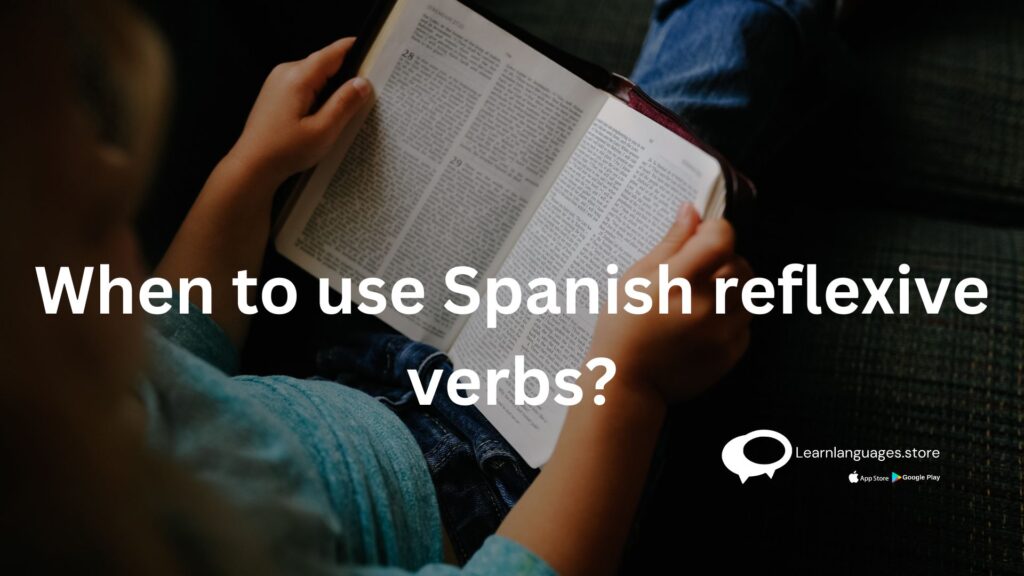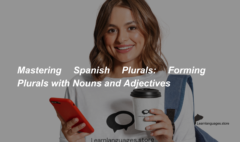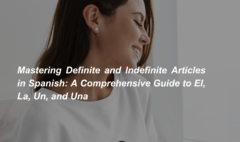A straightforward guide to learning reflexive verbs in Spanish
A straightforward guide to learning reflexive verbs in Spanish
What comes to mind when you hear the phrase “Spanish reflexive verbs”? Do you immediately think of an example? Or you don’t like to consider this subject? Whatever your response, you don’t need to panic. The likelihood is that you already know several reflexive verbs because they are so prevalent in spoken Spanish.
Estimated reading time: 5 minutes
Verbs are words that express action. Before being conjugated in Spanish to correspond to the subject, they end in -ar, -er, or -ir. A sentence’s subject is the entity that is doing the action. Understanding the subject is crucial in Spanish because the subject affects how the verb is conjugated.
Pronouns are words that replace nouns in sentences. In the example below, ella replaces “Maria” in the second sentence:
– Maria tiene que ir a la escuela hoy. Ella se olvidó sus libros en el aula
All you need to know about reflexive verbs are those three parts of speech. Reflexive verbs in Spanish are a type of verb that refers back to the subject. The name itself provides an explanation: reflexive verbs and pronouns reflect back to the subject who is performing the action. As a result, the conjugation always corresponds to the subject of the sentence: We left early from the concert. (We had to leave the concert early.)
In Spanish, there are five reflexive pronouns:
– me
– te
– se
– nos
– os
The most common Spanish reflexive verbs

Below are the most common Spanish reflexive verbs:
– Irse (to leave)
– Acordarse (to remember)
– Olvidarse (to forget)
– Sentirse (to feel)
– Darse (to give oneself)
– Encontrarse (to find oneself)
– Preocuparse (to worry)
– Fijarse (to take notice)
– Casarse (to marry)
– Sentarse (to sit down)
– Levantarse (to get up)
– Despertarse (to wake up oneself)
– Preguntarse (to wonder)
– Llamarse (to call oneself)
– Creerse (to believe)
– Reunirse (to meet up or reunite)
– Cuidarse (to take care)
When to use Spanish reflexive verbs?
There are five types of reflexive verbs: routines, motion, emotions, reciprocals, and verbs that are always reflexive.

Routine: These verbs include despertarse, peinarse, and levantarse, which describe daily routines such as getting up and getting ready.
Motion: Some verbs, like irse, describe motion or movement.
Emotions: Many emotions, such as aburrirse, preocuparse, and crearse, have reflexive forms.
Reciprocals: Reciprocals are only reflexive in their plural forms, implying that two or more people are doing something together or to each other, as in casarse or encontrarse.
Always reflexive: A few Spanish verbs, such as quejarse de (to complain about), darse cuenta de (to realise), and arrepentirse (to repent), are always reflexive.
Where do you place Spanish reflexive pronouns?
The reflexive pronouns are typically positioned next to the reflexive verb. That, however, is not always true:
The actual pronoun placement options are two.

Option 1: Before the verb
Except for affirmative commands, reflexive pronouns come before the verb, compound tense, or construction in all tenses or moods.
In these examples, the reflexive pronoun comes before the entire verb phrase when estar or haber form the full conjugation:
– In the subjunctive: Quiero que te diviertas. (I want you to have fun.)
– In the progressive: Se están quedando aquí. (They are staying here.)
– In the perfect tense: Ya me había mudado. (I had already moved.)
– In negative commands: No te preocupes. (Don’t worry.)
– In the popular future: Nos vamos a casar. (We are going to get married.)
Option 2: After the verb
In a few cases, the reflexive pronoun is attached to the end of the reflexive verb:
– In affirmative commands: ¡Cálmate! (Calm down!)
– With gerunds: Están quedándose aquí. (They are staying here.)
– With the infinitive: Vamos a casarnos. (We are going to get married)
You may have noticed that the last two examples, the gerund, and infinitive, are variations on sentences from Option 1. That’s because gerunds and infinitives allow you to use either placement option.
How to master Spanish reflexive verbs?
Knowing the difference between reflexive and non-reflexive versions of the same verb is essential for truly mastering reflexive verbs in Spanish.
Because the phrase “get bored” does not exist in Spanish, aburrir/aburrirse is a good example to consider:
– Te aburrirías con las clases. (You would get bored with these classes.)
Boredom reflects back on you in this case. Because you are becoming bored, the reflexive verb (aburrirse) is appropriate. However, if you want to say that the class is boring, you do not need to use the reflexive form of the pronoun:
– La clase te aburriría. (The class would bore you.)
In this case, the class is the subject, and no pronoun is required to reflect back to the subject. Here are some more examples to help you decide whether or not to use the reflexive form:
The meaning of acordar and acordarse changes completely depending on whether the reflexive form of the verb is used. Acordar is a verb that means to agree. In contrast, acordarse means to recall.
Here are a few more verbs whose reflexive forms have completely different meanings:
– dormir (to sleep)/dormirse (to fall asleep)
– poner (to put)/ponerse (to put on)
– probar (to try)/probarse (to try on)
– quitar (to take away)/quitarse (to take off)
– llevar (to carry)/llevarse (to take)
– volver (to return)/volverse (to turn around)
Conclusion
Reflexive verbs in Spanish require patience and practice to master. In this article, we’ve included a few examples to clarify these verbs. To master reflexive verbs, look for examples that are similar to them. learn with learnlanguage.store

Learn Languages Store
Vashi,
Email: services@learnlanguages.store










